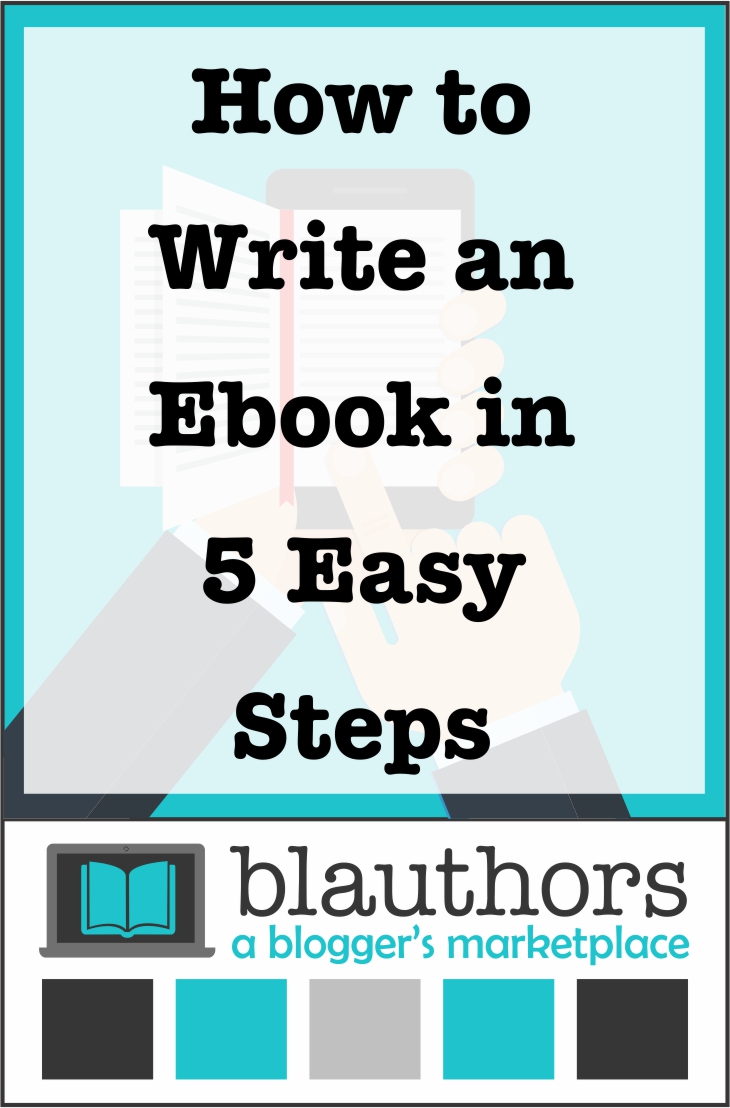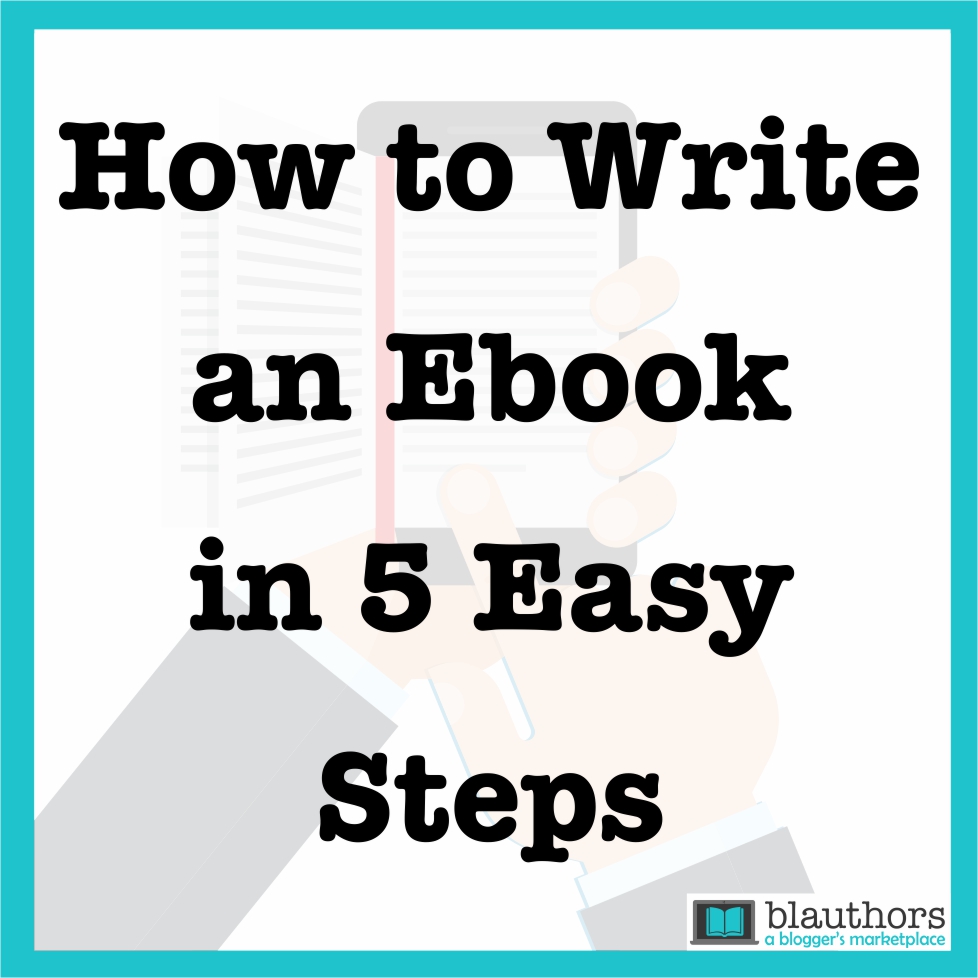How to Write an Ebook in 5 Easy Steps

How to Write an Ebook in 5 Easy Steps
If you are a blogger it can be hard to start writing your first ebook. It doesn’t have to be difficult though and in fact, it is quite simple if you are a seasoned blogger. I have written hundreds of e-books over the past 10 years and each month I get faster and faster at creating them. Any blogger can write an ebook. And who better to write an ebook, since most bloggers know so much information about a niche topic. Here is how to write an ebook in 5 easy steps:
Step 1: Decide on your topic. The best idea is to pick one of your top performing blog posts and center your topic around that subject matter. You are already getting traffic for this topic so it makes it easier to market the ebook once published. If you are not interested in expanding the information in your top performing blog post, continue down your list to see what other posts do well and if you could expand upon those topics.
Many times, I just start writing based on topics within my niche that I am highly interested in since I will be working on the same topic for a while. I like to enjoy the creative process and not dread it, therefore, choosing a topic of high interest is more important to me than high traffic. I need to finish the ebook, and I have quite a few I have started and lost interest in resulting in those titles never being completed.
Step 2: Start writing. This can mean anything from a simple outline, planning out your or diving right in and starting to actually write the first draft. Once you have planned it out, get right to it and start officially writing. If you are using blog posts that you already have written, start organizing the posts into one complete document.
You can create ebooks in Microsoft Word, Powerpoint, Adobe Illustrator or even Google Docs to name a few examples. I highly recommend that you create the ebook using a program that you will always have access to in order to edit the document in the future. This means that you own the software so you can move an image slightly or make a quick correction. If you use an online program you will not be able to edit it if you are offline or even worse if the online software no longer exists after years go by you will not be able to edit your original ebook at all (this actually happened to me). In addition, when you use software offline to create ebooks, it allows you to write even if you do not have access to the internet.
If you are writing an ebook with many pictures, I would recommend using graphic design software. It is my personal preference to use Corel Draw but many use Adobe Illustrator or Microsoft Publisher. This type of software allows you to move images easily around the page and wrap the text. Many people also use Powerpoint and find it easy to layout images and text.
If you are writing an ebook, with a large amount of text, Word or Google Docs is an excellent choice. You can add pictures to Word and wrap text. You just can not get as extensive with layouts as you can with graphic design software.
My suggestion is to try one format and learn it well. My speed in creating ebooks has increased significantly because I use the same graphic design software to create each time. The learning curve is reduced which in turn saves me hours of writing time.
Step 3: Find commercial use images. Most readers enjoy pictures and with e-books full-color photos and graphics are wonderful. If you are planning on publishing on the Kindle, you will want images that convert well to black and white since some Kindles are not color screens.
If you are creating digital documents that will most likely be printed (ie printables, worksheets, journals, etc) you will want to be mindful that excessive color pages may not print well on home printers. Less color is more and avoid full page photographs.
Finding images can take quite some time. You need to make sure that the image is royalty free and available for commercial use. Check whether the picture can be used in digital formats such as ebooks and how many copies can you sell. I use Shutterstock but there are many companies available that provide royalty use photos just do your homework on the licenses. I also have used Graphic Stock at times – the selection is decent for small projects.
Don’t forget to create an amazing cover. When I look back at some of my early ebooks the covers are absolutely horrible. Even I would not want to buy the book. I have learned to create eye grabbing ebook covers usually hinting at what is inside the ebook. If you are not sure where to go with the cover you can hire out or go with a solid color and a bold title to grab the attention of your readers.
Step 4: Edit the book. Go through the book check for spelling and grammatical errors. Are the pictures lined up correctly? Does the book need page numbering? Table of contents? Let it sit for a day or two and edit the book again.
Ask at least one more person to also edit the book for spelling, grammar, and content. Request that the person(s) provide you will constructive criticism and receive the feedback with an open mind. It can be difficult to get negative feedback after you spend hours and hours writing the book but most likely it will improve your book tenfold.
Step 5: Decide where you are going to sell your ebook because this will influence how you need to convert the file. For example, if you convert to PDF (my personal favorite) your customers will be able to open it up on any device and print it if you enable printing. You can sell your PDF ebook on your own website, on blauthors (which I also highly recommend) and offer it to affiliates. Kindle requires a certain format along with ibooks requiring another format. You can convert the document into various formats to make it available for sale in various platforms.
When done, don’t forget to market the book to start making money from all of your hard work! Have questions about writing ebooks, email me. I would be happy to help.
Need help with step 1? Download this freebie to help you get started when you sign up to receive our newsletter.



